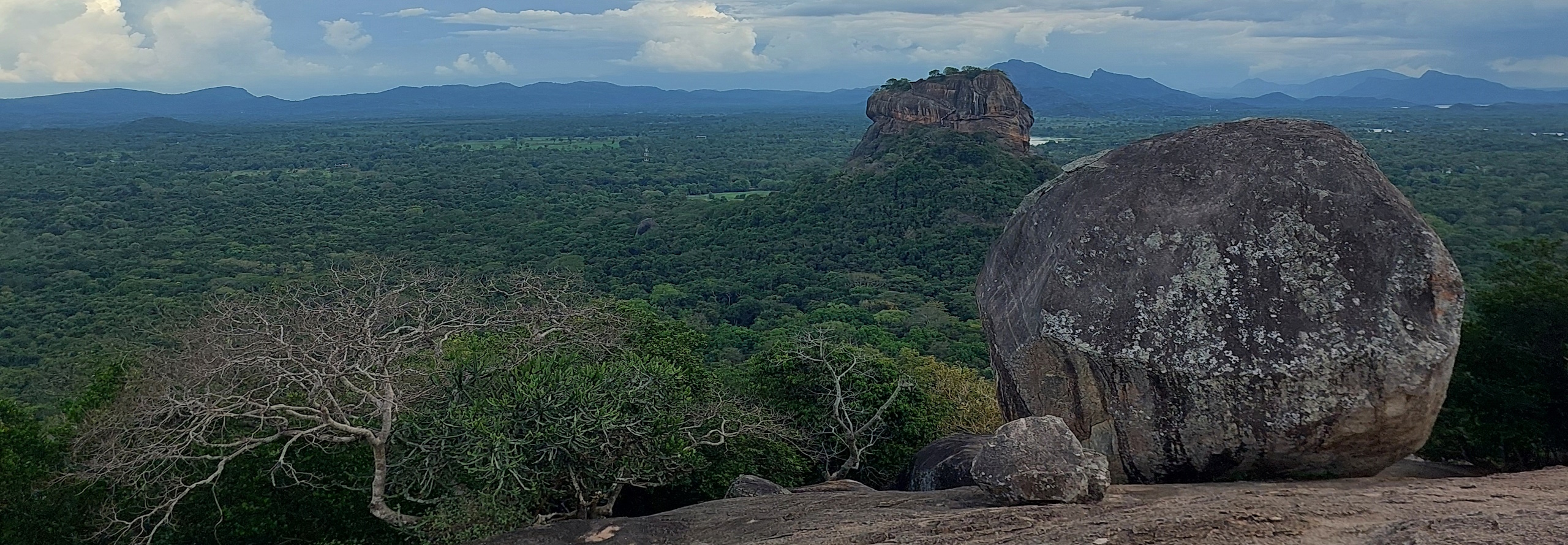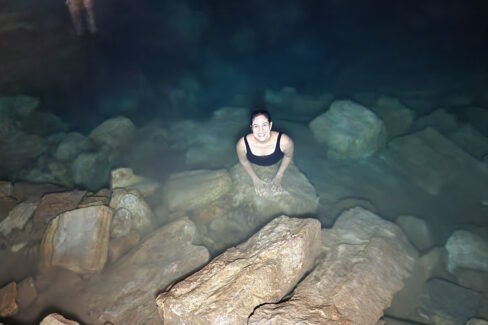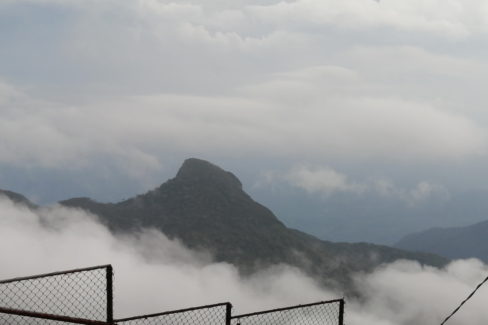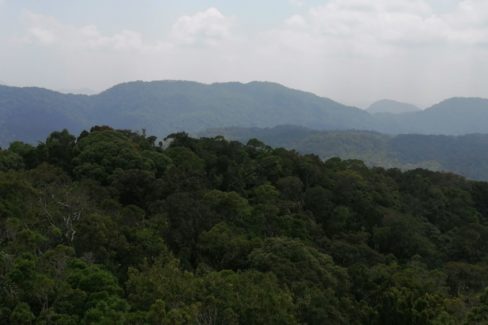A Visit to Pidurangala Rock
Sigiriya has always been a fascinating place for decades but somehow Pidurangala was not too well known. Located almost opposite the Lion Rock or ‘Sinha Giraya’, it is an interesting place with varying stories of its historical significance. Subsequent to some fools flashing their butts on top of Pidurangala, it slowly gained popularity for its stunning views from the top.
The name Pidurangala is said to come from ‘Pidu ran’ or donated gold and hence, Pidurangala. There are many stories about Kassapa donating this area to the monks and his cremated remains being buried here but I need to dig a bit more about this from some proper archaeological sources.
I was travelling with a group of ladies on a cycling trip to Sigiriya and since we had time on Saturday evening, we decided to climb Pidurangala. We arrived at the location – a temple called the Pidurangala Sigiri Raja Maha Viharaya – and began our climb. As we walked up the steps to the base of the temple, I noticed that it was nestled inside a rock shelter with a drip ledge cut into the rock and with a Brahmi inscription on top.
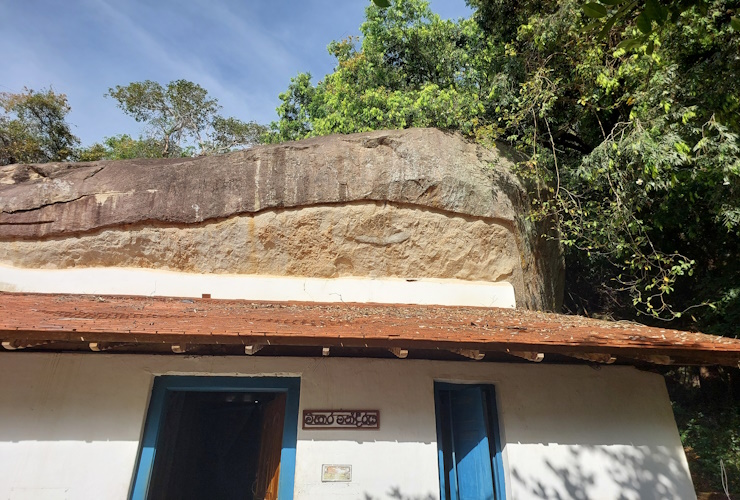
Pidurangala Rock Base Drip Ledge & Inscription
Drip ledges cut into the rock are indicative of the use of iron tools which helps to date the time the drip ledge was cut. Furthermore, the Brahmi inscriptions, depending on whether it is early or late Brahmi, helps once again to place the time of the usage of that shelter. A drip ledge usually was cut for rock shelters where monks used to meditate or for rock shelters where people took refuge. Certain historians feel that depending on the location, some of these drip ledges were cut into the rock shelters where armies of kingdoms took refuge.
We began our climb up the stone steps and into a sort of courtyard area with many boulders. We passed this and onto more steps that were cut alongside the rock. Some areas were steep, some were broken but it was a beautiful and serene climb with the rock on one side and the forest on the other.
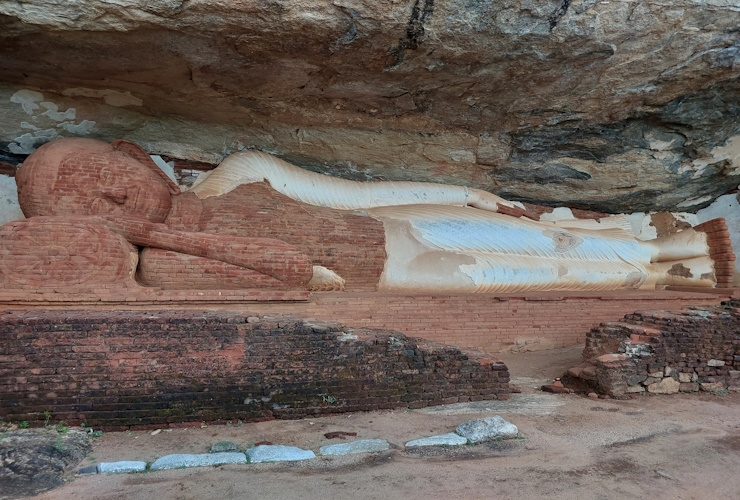
Reclining Buddha Statue
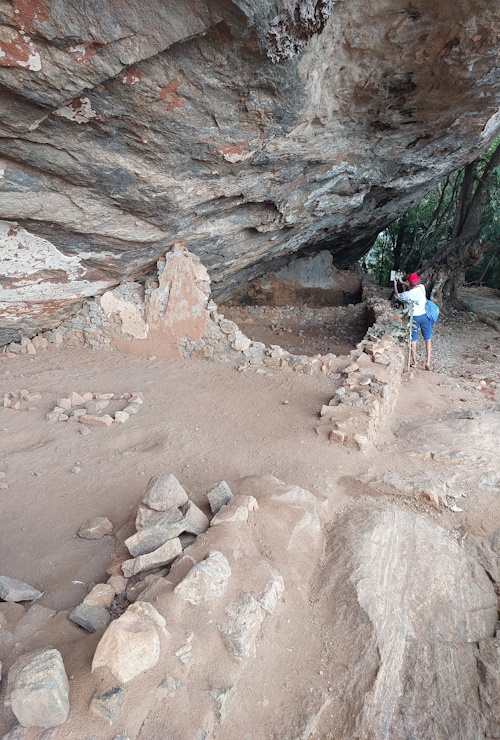
Remains of the Kuti or Rooms of the Temple
After ascending for about 20 minutes, we happened upon the ruins of the old temple built into the rock where there were kuti or rooms where the monks used to meditate followed by a huge reclining Buddha statue. The walls of the rooms and the Buddha statue were made of red brick with the statue showing a white plaster cover that has now slowly stripped away. Outside this area is an inscription in the rock floor which translates to “One amuna of paddy fields and Kahavanu coins were donated by the mason Dalaganayunaka”. The Department of Archaeology board attributes this to the 6 – 7 Century AD and that the script is transitional Brahmi and the language is old Sinhala.
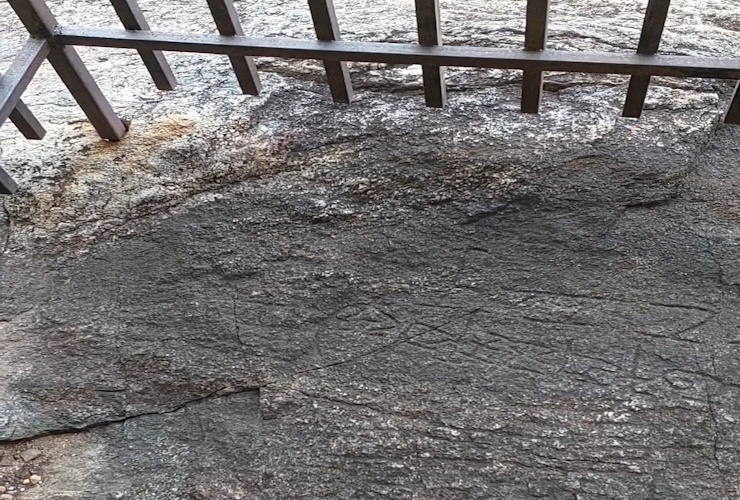
Inscription in the Rock
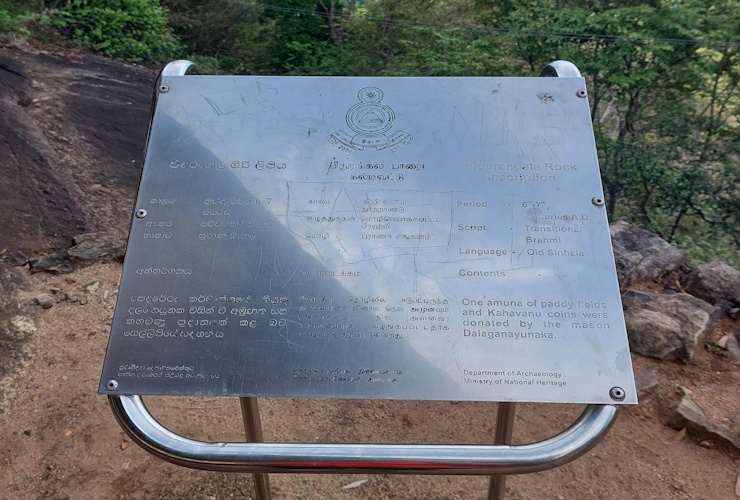
Translation of the Inscription
Once you pass this and round the rock, the climb gets a bit more rocky with many boulders. We passed through a few passageways and at one point I decided climbing barefoot would be steadier. This was after sidling along a massive boulder and then having to carefully climb up a slanted boulder. Walking and climbing barefoot gave much better grip.
After squeezing through two V shaped rocks, we came to the most challenging part which was a vertical climb up boulders and rocks. The last bit required a bit of help though a bit of rolling and hoisting would have got one up without much ado. This vertical climb is located directly under a massive boulder.
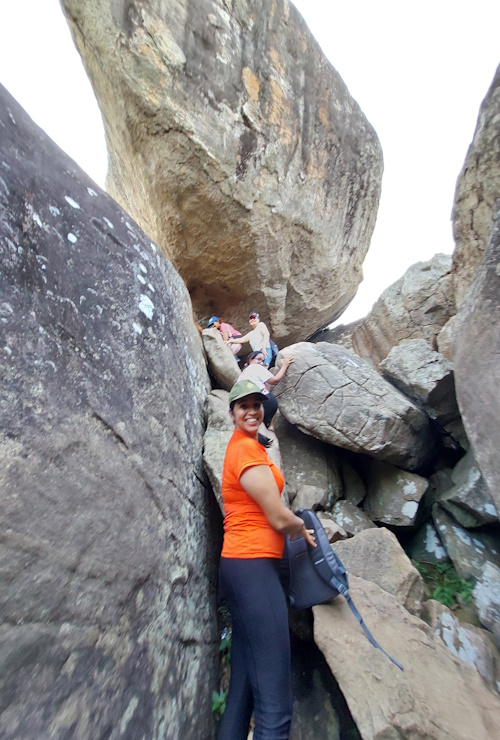
Last Climb to the Top
The shape of this massive boulder is rounded with a small base wedged onto the edge of the rock. It reminded me of a similar boulder in Haththikuchchi where Dr. Ganga Dissanayaka (Art Historian & Ethnographer) explained how these were boulders used for military purposes where they were pushed down on approaching enemies. Made me wonder to which time period this particular boulder on Pidurangala belonged.
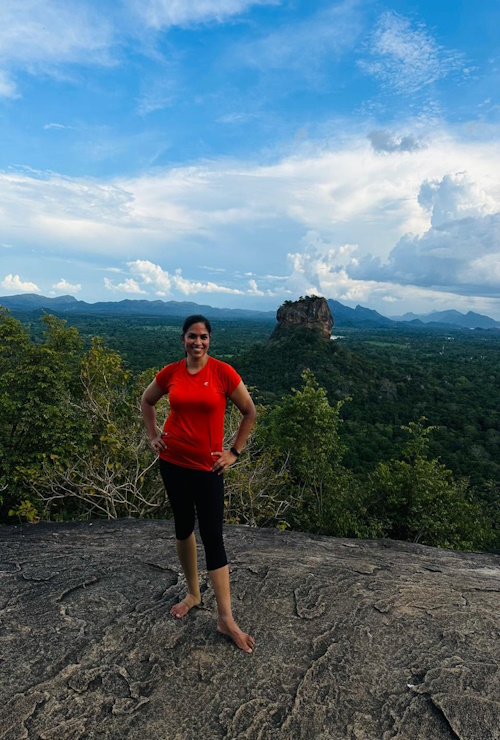
View of Sigiriya As You Climb Up
Once you come up under the boulder and onto the side you get this beautiful view of Sigiriya – the side of the paws and the steps to the summit. It was truly amazing. From here you round behind the boulder and climb onto the slanted part of the rock and onto the top which is quite vast. At the top were two mounds of brick which were cordoned off and covered – they looked like stupa remains to me. On the other side of these stupa remains was an area where there were cut marks in the rock marking an almost square area and there was water in this. Made me wonder if it was once a bathing pond for the monks of the temple.
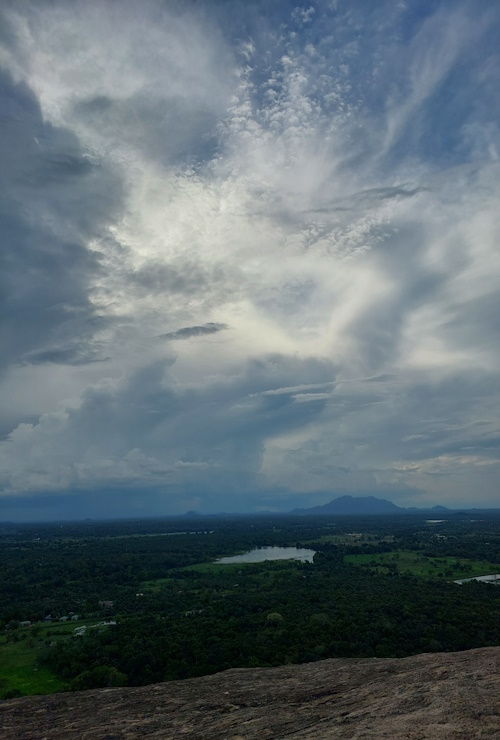
View from the top of Pidurangala
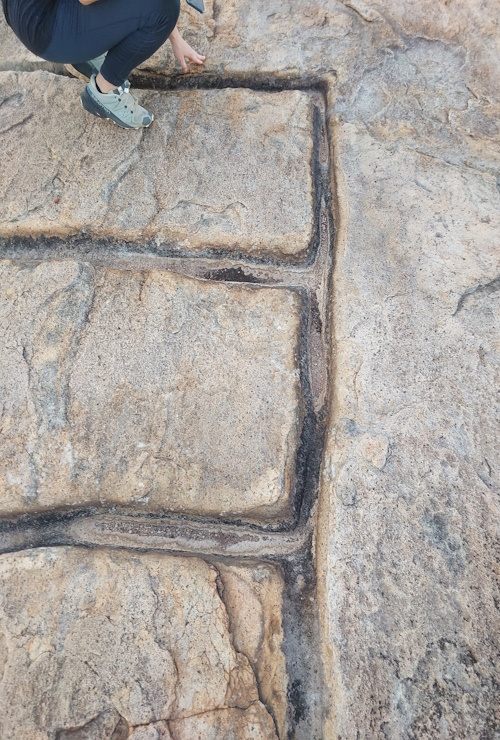
Cut Marks in the Rock for a Pond?
After reaching the top and roaming around while taking in the beautiful views, we decided to descend back down before it was too late. We did not see a sunset because it was overcast but it was still a beautiful view. We were accompanied on our trip up by many dogs who seemed to almost mock us as we climbed up since they had no problem clambering up. They were territorial and would fight with each other but here it was survival of the fittest. They looked to us for food but we had none to give.
Descending down we took a path on the left of the boulder, instructed by a guide and this was a far better route than the one we took going up. We went down much faster of course and I wore my shoes after clambering down past the rocky, boulder bits.
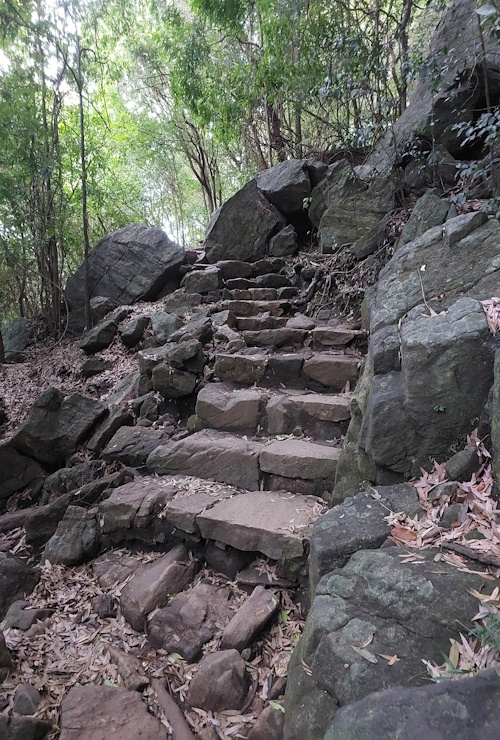
The Steps Leading to the Top
The evening was getting dark and the stone steps and foresty bits were dark but serene. I wondered about the monks of yore who lived here and meditated amongst nature.
We finally arrived at the bottom and made our way to the bus and back to where we were staying.

